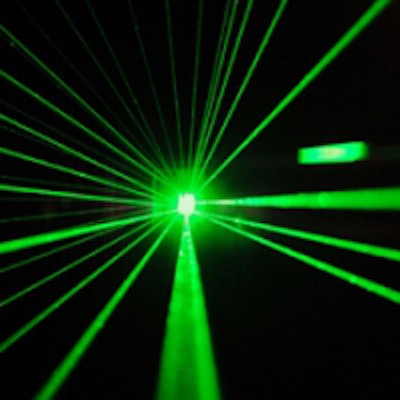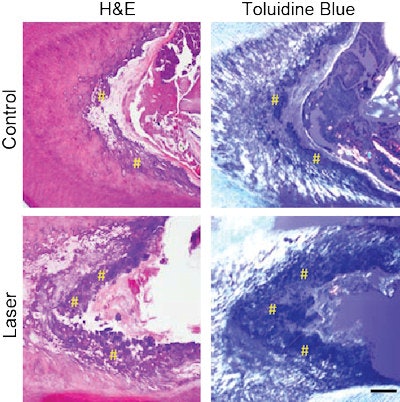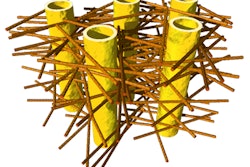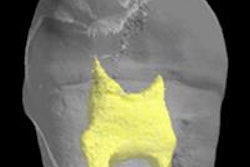
A multidisciplinary research team has become the first to use a low-power laser (LPL) to trigger stem cells inside the body to regenerate tissue. The researchers triggered dental stem cells to form dentin, and published their findings in Science Translational Medicine (May 28, 2014, Vol. 6:238, p. 238ra69).
They outlined the precise molecular mechanism involved and demonstrated its ability using multiple laboratory and animal models. Their work may result in a number of clinical applications in restorative dentistry and even in regenerative medicine areas, such as wound healing, bone regeneration, and more, they noted.
“It would be a substantial advance in the field if we can regenerate teeth rather than replace them.”
The study included researchers from Harvard University's Wyss Institute for Biologically Inspired Engineering in Boston, Harvard School of Dental Medicine, Harvard School of Engineering and Applied Sciences (SEAS), Harvard-MIT Division of Health Sciences and Technology, National Institute of Dental and Craniofacial Research (NIDCR), and other leading research and clinical care institutions in the U.S.
They evaluated the ability of a nonionizing LPL to direct differentiation of dental stem cells for dentin regeneration. A rodent pulp-dentin healing model was used because of the abundant, endogenous adult dental stem cell population within the readily accessible oral cavity of the animal, according to the researchers.
The rodents had holes drilled in their molars in a laboratory. Then, the tooth pulp that contains adult dental stem cells was treated with low-dose laser treatments. After the laser treatments and temporary caps, the animals were kept comfortable and healthy. After about 12 weeks, researchers used high-resolution x-ray imaging and microscopy to confirm that the laser treatments triggered the enhanced dentin formation.
 The team used high-resolution x-ray imaging and microscopy techniques to assess the formation of reparative (tertiary) dentin 12 weeks after the low-power laser treatment. In the microscopy images shown here, the yellow hashtags (#) sit atop the newly formed tertiary dentin; there is more tertiary dentin in the laser-treated teeth than in the control. Image courtesy of the Wyss Institute and SEAS.
The team used high-resolution x-ray imaging and microscopy techniques to assess the formation of reparative (tertiary) dentin 12 weeks after the low-power laser treatment. In the microscopy images shown here, the yellow hashtags (#) sit atop the newly formed tertiary dentin; there is more tertiary dentin in the laser-treated teeth than in the control. Image courtesy of the Wyss Institute and SEAS."Our treatment modality does not introduce anything new to the body, and lasers are routinely used in medicine and dentistry, so the barriers to clinical translation are low," stated lead researcher David Mooney, PhD, in a press release. "It would be a substantial advance in the field if we can regenerate teeth rather than replace them."
The results of the current study suggest that a minimally invasive treatment, LPL, can be used to activate endogenous cues that can drive a regenerative response of resident stem cells, potentially bypassing the need to deliver exogenous cells or factors.
What makes this different from previous studies and treatments is that, at present, to effect tissue regeneration, stem cells must be isolated in the body and then grown in a laboratory before the cells are returned to the patient's body. That process has to overcome a number of regulatory and technical hurdles to succeed. But the technique applied in the current study removes the laboratory portion of the process, and this may mean fewer barriers before practitioners are using this technique in their offices.
According to the study authors, stem cell therapies are attractive for treating numerous diseases, including dental diseases (for example, tooth decay and periodontal disease). Current clinical dentistry is often focused on restorative approaches that involves placement of inert materials, they noted. However, tissue regeneration is an attractive alternative because materials alone fail with time and do not provide the full function of the tissue. A wide variety of biochemical (small molecules, growth factors, peptides, microRNAs) and biophysical (electrical, magnetic, ultrasound) cues are currently being researched for their ability to promote tissue regeneration.
The ability of LPL to activate an endogenous morphogen to direct resident stem cell differentiation (in this case, dental stem cell) adds a potentially potent tool to the regenerative armamentarium, according to the researchers.
The authors are already working with the NIDCR to outline the requisite safety and efficacy parameters for human clinical trials.
"We are also excited about expanding these observations to other regenerative applications with other types of stem cells," said Praveen Arany, DDS, PhD, an assistant clinical investigator at the National Institutes of Health.



















